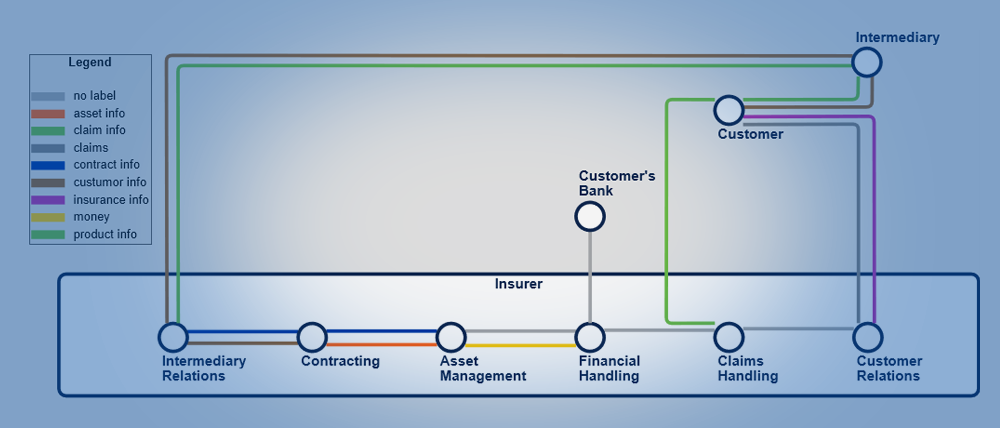
Exploring the Gartner Monitoring Magic Quadrant for Enterprise Architecture Tools
Introduction
In this article, we will dive deep into the Gartner Monitoring Magic Quadrant for Enterprise Architecture Tools and explore how it can help organizations make informed decisions about their enterprise architecture strategies. We will discuss the latest trends and developments in enterprise architecture tools, as well as highlight the top tools recommended by Gartner.
The Importance of Enterprise Architecture Tools
Enterprise architecture tools play a crucial role in managing and optimizing an organization's IT infrastructure. These tools enable businesses to align their technology investments with their business goals and objectives. By providing a holistic view of an organization's IT landscape, enterprise architecture tools help identify areas of improvement, streamline processes, and enhance overall efficiency.

Understanding the Gartner Monitoring Magic Quadrant
The Gartner Monitoring Magic Quadrant is a valuable resource for organizations looking to evaluate and select enterprise architecture tools. It provides a visual representation of various vendors in the market based on their completeness of vision and ability to execute. The quadrant is divided into four quadrants: Leaders, Challengers, Visionaries, and Niche Players.
What is the Gartner Magic Quadrant for Enterprise Architecture Tools?
The Gartner Magic Quadrant for Enterprise Architecture Tools is a research methodology that evaluates vendors based on their ability to execute and completeness of vision in the enterprise architecture market. This evaluation helps organizations understand which vendors are leaders in the industry and have a strong product offering.
How does Gartner Evaluate Vendors?
Gartner evaluates vendors based on several criteria, including product functionality, customer experience, market responsiveness, innovation, and overall financial viability. Vendors are then positioned within the magic quadrant based on their performance across these criteria.
Why is the Gartner Magic Quadrant Important?
The Gartner Magic Quadrant is widely recognized as a trusted source of information for organizations looking to invest in enterprise architecture tools. It provides valuable insights into the strengths and weaknesses of different vendors, helping organizations make informed decisions about their technology investments.
The Latest Trends in Enterprise Architecture Tools
The enterprise architecture tools market is constantly evolving, with new trends and developments shaping the industry. Here are some of the latest trends to watch out for:
Cloud-based Enterprise Architecture Tools
With the growing adoption of cloud technologies, many organizations are shifting towards cloud-based enterprise architecture tools. These tools offer scalability, flexibility, and cost-effectiveness, allowing organizations to easily manage their IT infrastructure in a cloud environment.
Integration with DevOps Practices
As organizations embrace DevOps Go to this website practices, integration with enterprise architecture tools becomes crucial. This integration enables seamless collaboration between development and operations teams, ensuring that architectural decisions align with business objectives.
AI and Machine Learning Capabilities
AI and machine learning capabilities are becoming increasingly important in enterprise architecture tools. These technologies enable advanced Click here for info analytics and automation, helping organizations make data-driven decisions and streamline their architectural processes.
Enhanced Security Features
In today's digital landscape, cybersecurity is a top concern for organizations. Enterprise architecture tools are incorporating enhanced security features to protect sensitive data and ensure compliance with regulations.
Top Enterprise Architecture Tools in the Gartner Magic Quadrant
Every year, Gartner releases its Magic Quadrant for Enterprise Architecture Tools, highlighting the top vendors in the market. Here are some of the leading tools recommended by Gartner:
Tool A: Tool A offers a comprehensive set of features for managing enterprise architectures. It provides robust modeling capabilities, integration with other IT management tools, and advanced analytics for decision-making.
Tool B: Tool B is known for its user-friendly interface and ease of use. It offers a wide range of functionalities, including modeling, analysis, and reporting, making it suitable for both small and large organizations.
Tool C: Tool C stands out for its advanced AI capabilities. It leverages machine learning algorithms to provide predictive analytics and automate repetitive tasks, enabling organizations to make informed decisions quickly.
Tool D: Tool D is a cloud-based solution that focuses on collaboration and agility. It allows multiple stakeholders to contribute to the enterprise architecture process in real-time, promoting cross-functional collaboration.
Tool E: Tool E excels in its integration capabilities. It seamlessly integrates with other IT management tools, enabling organizations to leverage their existing infrastructure investments.
FAQs about the Gartner Monitoring Magic Quadrant for Enterprise Architecture Tools
- The Gartner Monitoring Magic Quadrant is a research methodology used to evaluate vendors in the enterprise architecture tools market based on their completeness of vision and ability to execute.
- Gartner evaluates vendors based on criteria such as product functionality, customer experience, market responsiveness, innovation, and financial viability.
- The Gartner Magic Quadrant provides valuable insights into the strengths and weaknesses of different vendors, helping organizations make informed decisions about their technology investments.
- Some of the latest trends include cloud-based tools, integration with DevOps practices, AI and machine learning capabilities, and enhanced security features.
- Some of the top tools recommended by Gartner include Tool A, Tool B, Tool C, Tool D, and Tool E.
- Enterprise architecture tools help organizations align their technology investments with business goals, streamline processes, enhance efficiency, and make data-driven decisions.
Conclusion
The Gartner Monitoring Magic Quadrant for Enterprise Architecture Tools provides valuable insights into the top vendors in the market and helps organizations make informed decisions about their technology investments. By keeping up with the latest trends and leveraging the recommended tools, organizations can optimize their IT infrastructure and drive business success. It is essential for businesses to stay updated on the Gartner Magic Quadrant and explore the various enterprise architecture tools available to them.